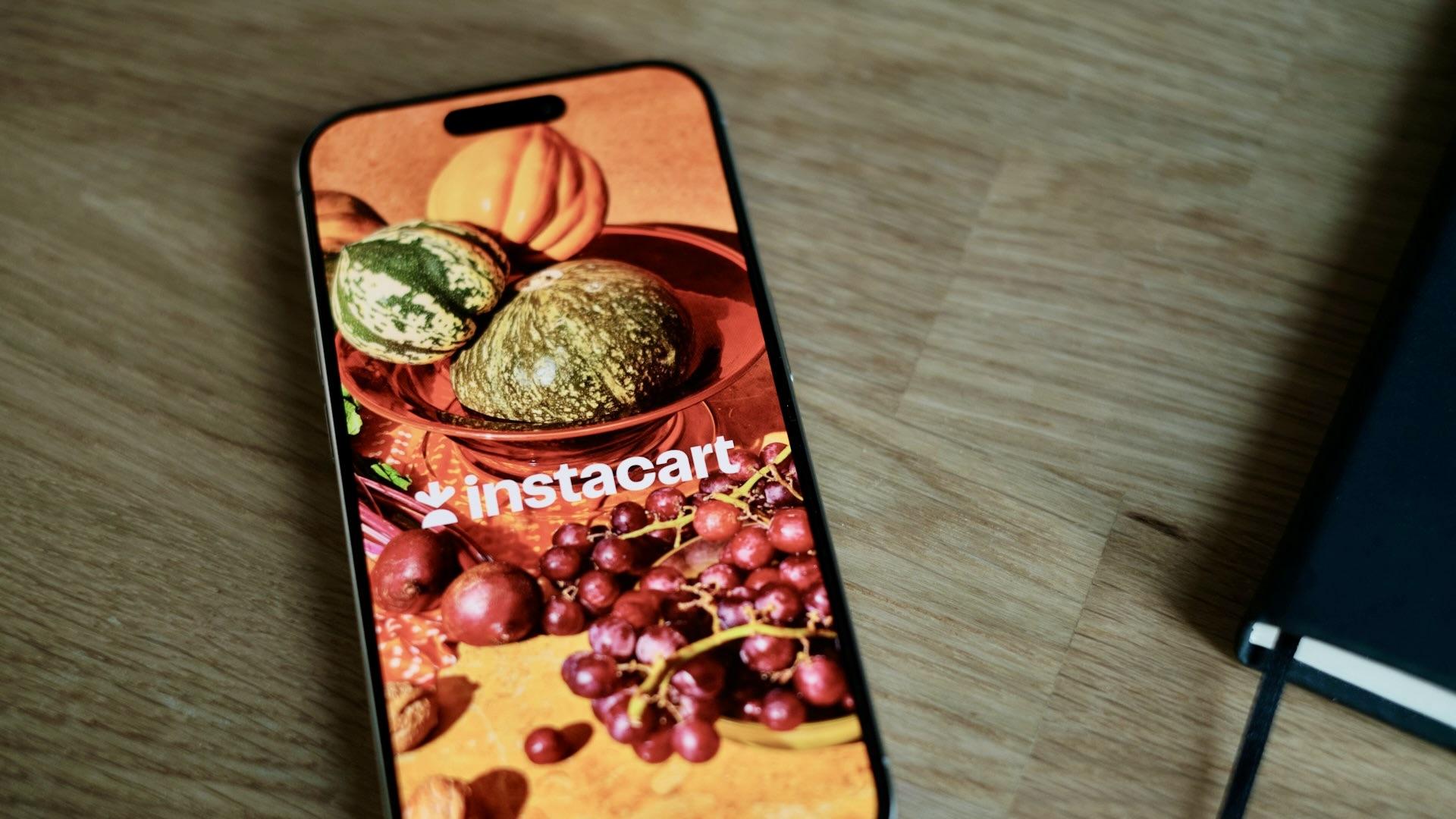Instacart has reduced its fourth-quarter outlook, forecasting lower gross transaction value and core profit amid cooling consumer demand and stiffening competition in the online delivery market. The company now anticipates GTV of $8.5 billion to $8.65 billion, falling short of previous estimates.
Instacart Lowers Fourth-Quarter Expectations Amid Holiday Spending Concerns
On Tuesday, Instacart predicted lower-than-expected quarterly gross transaction value (GTV) and core earnings, suggesting that customers may cut back on their use of the service to order groceries online and have them delivered during the holidays, Reuters reports
Online delivery services like Instacart, UberEats, and DoorDash were able to expand their product lines and charge higher transaction fees during the pandemic boom, but competition has since heated up.
Tighter Budgets Weigh on Consumer Spending
But as family finances crack under the strain of rising prices, spending has slowed.
Data provided by LSEG indicates that Instacart, which also provides same-day delivery on Home Depot products, anticipates a fourth-quarter GTV of $8.50 billion to $8.65 billion, which is lower than the estimated $10.20 billion.
Also falling short of projections was the aim for EBITDA, or adjusted earnings before interest, taxes, depreciation, and amortization, which was set at $230–240 million.
DoorDash Takes a Different Approach with Higher Profit Expectations
According to Investing.com, rival DoorDash, on the other hand, predicted core earnings for the fourth quarter that were higher than expected.
Senior analyst Blake Droesch of eMarketer stated that "Given the momentum of the business, paired with how well Instacart performed last year during the holiday season, it is surprising to see a more conservative forecast."
While trading was underway after the market closed, Instacart's stock fell 5%.
Instacart’s Profit Growth Supported by Low-Cost Delivery Options
Despite this, the business turned a profit in the reported quarter and exceeded expectations on critical metrics; year-over-year order growth was 10%, driven in part by the company's affordable delivery choices, which appealed to budget-conscious customers.
There was no change from the previous quarter to the next in advertising revenue increase, which was 11%. During a conference call following the company's earnings, financial chief Emily Reuter indicated that the robust advertising expenditure by new brands more than made up for a decline by established CPG companies.
Expanding Partnerships and Digital Coupon Integration
With the addition of Party City and the introduction of digital discounts from shops, Instacart has expanded its platform's tie-ups. Meanwhile, restaurants have joined the platform through its relationship with UberEats, which allows for food delivery.
"These developments are a clear indication that Instacart has big ambitions to go from a grocery delivery service to an all-around retail technology giant," said Droesch.
GTV increased by almost 11% to $8.30 billion, above predictions of $8.19 billion, and third-quarter adjusted EBITDA of $227 million surpassed estimates of $212.08 million.



 Modi and Trump Hold Phone Call as India Seeks Relief From U.S. Tariffs Over Russian Oil Trade
Modi and Trump Hold Phone Call as India Seeks Relief From U.S. Tariffs Over Russian Oil Trade  Russia Stocks End Flat as Energy and Retail Shares Show Mixed Performance
Russia Stocks End Flat as Energy and Retail Shares Show Mixed Performance  Australia’s Labour Market Weakens as November Employment Drops Sharply
Australia’s Labour Market Weakens as November Employment Drops Sharply  Asian Currencies Steady as Fed Delivers Hawkish Rate Cut; Aussie and Rupee Under Pressure
Asian Currencies Steady as Fed Delivers Hawkish Rate Cut; Aussie and Rupee Under Pressure  Oil Prices Rebound in Asia as Venezuela Sanctions Risks Offset Ukraine Peace Hopes
Oil Prices Rebound in Asia as Venezuela Sanctions Risks Offset Ukraine Peace Hopes  U.S. Dollar Slides for Third Straight Week as Rate Cut Expectations Boost Euro and Pound
U.S. Dollar Slides for Third Straight Week as Rate Cut Expectations Boost Euro and Pound  Asian Currencies Hold Steady as Indian Rupee Slides to Record Low on Fed Outlook
Asian Currencies Hold Steady as Indian Rupee Slides to Record Low on Fed Outlook  ASX Shares Slide After ASIC Imposes A$150 Million Capital Requirement
ASX Shares Slide After ASIC Imposes A$150 Million Capital Requirement  Global Markets Slide as Tech Stocks Sink, Yields Rise, and AI Concerns Deepen
Global Markets Slide as Tech Stocks Sink, Yields Rise, and AI Concerns Deepen  Fed Rate Cut Signals Balance Between Inflation and Jobs, Says Mary Daly
Fed Rate Cut Signals Balance Between Inflation and Jobs, Says Mary Daly  Wall Street Futures Dip as Broadcom Slides, Tech Weighed Down Despite Dovish Fed Signals
Wall Street Futures Dip as Broadcom Slides, Tech Weighed Down Despite Dovish Fed Signals  Dollar Struggles as Markets Eye Key Central Bank Decisions and Global Rate Outlooks
Dollar Struggles as Markets Eye Key Central Bank Decisions and Global Rate Outlooks  S&P 500 Slides as AI Chip Stocks Tumble, Cooling Tech Rally
S&P 500 Slides as AI Chip Stocks Tumble, Cooling Tech Rally  Ireland Limits Planned Trade Ban on Israeli Settlements to Goods Only
Ireland Limits Planned Trade Ban on Israeli Settlements to Goods Only  Gold Prices Dip as Markets Absorb Dovish Fed Outlook; Silver Eases After Record High
Gold Prices Dip as Markets Absorb Dovish Fed Outlook; Silver Eases After Record High  BOJ Expected to Deliver December Rate Hike as Economists See Borrowing Costs Rising Through 2025
BOJ Expected to Deliver December Rate Hike as Economists See Borrowing Costs Rising Through 2025 































